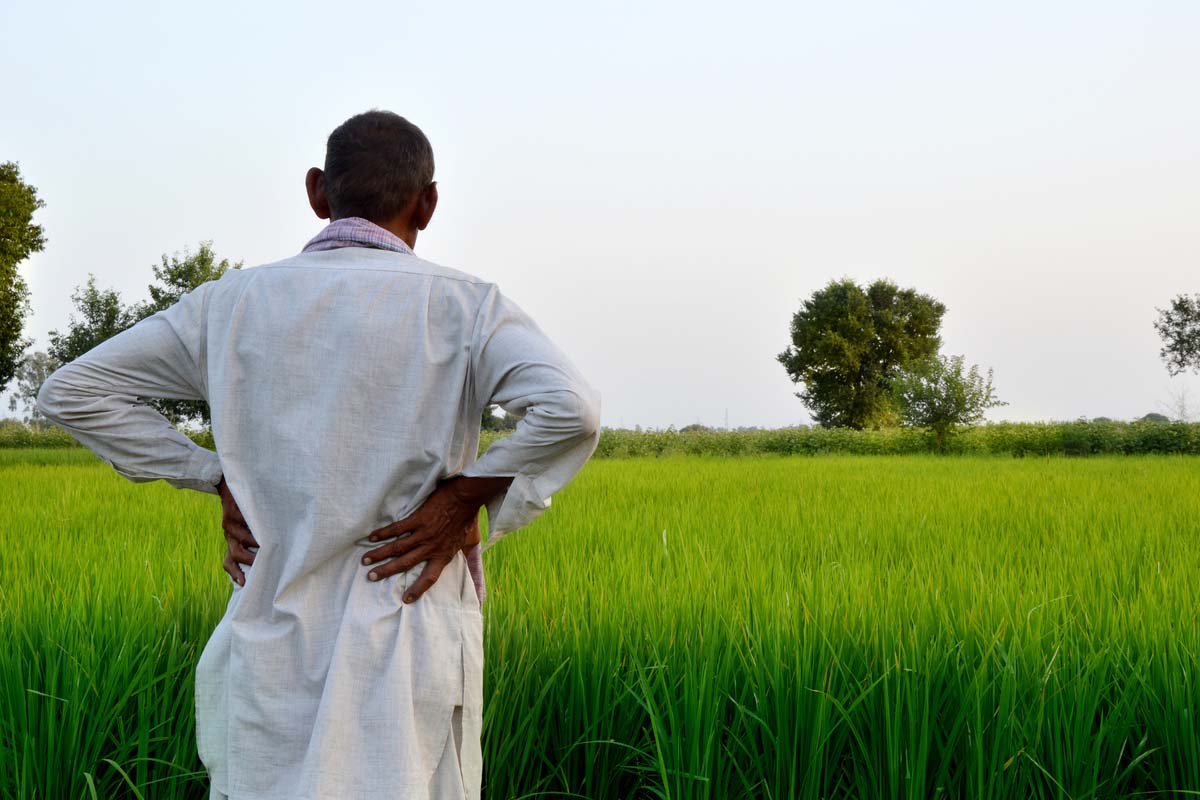The fall of 23.9 per cent in our first quarter GDP has confirmed the worst fears of naysayers while optimists who believed in a V-shaped recovery and were seeing green shoots all around have gone silent. To be fair, we had our hands full, what with the coronavirus pandemic showing no signs of receding and China no intention of backing down. But, clearly, the time has come for the Government to pull out all stops to arrest the downward slide of the economy.
Umpteen suggestions have been made on the ways to get out of the pandemic-induced economic distress. However, the emphasis of most proposals is on resuscitating the manufacturing sector which is down by 39.3 per cent and given the fall in demand, cannot easily come back to its earlier levels. Others have suggested massive Government expenditure on infrastructure. However, infrastructure projects, particularly by the Government, take an eternity to plan and execute while the problems faced by the economy require immediate redress.
Seemingly, no one has given a thought as to how agriculture can help in our economic recovery; although agriculture was the only part of the economy to withstand the vagaries of the virus scourge, growing by 3.9 per cent in the first quarter. Additionally, the demand for agricultural implements like tractors, and agricultural inputs like fertilisers kept the cash registers of many manufacturing concerns ringing. Clearly, a ‘Grow in India’ initiative can supplement the ‘Make in India’ initiative of the Government.
The economic stimulus of Rs.20 lakh crore, announced by the Prime Minister in May 2020, had a substantial package of Rs.4.30 lakh crore for farmers, out of which Rs 3.80 lakh crore were in the form of credit and guarantees while Rs.50,000 crore were in the form of Government spending. Elucidating the stimulus package, the Finance Minister promised Rs 2 lakh crore of concessional credit to 2.5 crore farmers and Rs 30,000 crore additional loans for small and marginal farmers. An Agricultural Infrastructure Fund of Rs.1 lakh crore was mooted; Food Micro Enterprises got Rs 10,000 crore, fisheries got Rs 20,000 crore, animal husbandry infrastructure got Rs 15,000 crore, herbal cultivation got Rs 4,000 crores and bee-keeping and vegetable cultivation got Rs 500 crore each. Sincerely implemented, investments of this magnitude can transform Indian agriculture. However, even four months after announcement, the schemes on which the stimulus package for agriculture is to be spent, have not been fleshed out.
It was hoped that the Agricultural Infrastructure Fund (AIF) for building post-harvest storage and processing facilities, would be created out of a grant by the Centre but later developments indicate that Public Sector Banks would provide Rs 1 lakh crore as loans under AIF, over the next four years and the Centre would only provide 3 per cent subsidy on the interest as also a credit guarantee. The budgetary implication for the Central Government is less than Rs 5,000 crore, spread over four years.
Some legislative reforms have also been enacted for the benefit of farmers. The Essential Commodities Act has been amended to remove the existing restrictions on stocking food produce. Then, the Farmers’ Produce Trade and Commerce (Promotion and Facilitation) Ordinance, 2020 (FPTC Ordinance) ends the monopoly of the Agricultural Produce Marketing Committees (APMCs) and allows free purchase and sale of agricultural produce. Another ordinance, the Farmers (Empowerment and Protection) Agreement on Price Assurance and Farm Services Ordinance, 2020 (FAPAFS Ordinance) legalises contract farming.
The amendments to the Essential Commodities Act have been well received but the FPTC and FAPAFS ordinances are being opposed tooth and nail by States and farmers’ bodies who apprehend that the FTPC Ordinance would make APMCs defunct, leaving farmers at the mercy of big traders and corporates. Similarly, it appears that the FAPAFS Ordinance would facilitate the entry of corporates in farming, leading to huge mechanized farms, thereby threatening the livelihood of agricultural labourers and small farmers. Farmers also fear that cash-rich companies may force them to enter into disadvantageous leasing contracts. Additionally, non-BJP States feel that agriculture being in the State List, the Central ordinances have intruded on their legislative domain.
Leaving aside controversies, much more has to be done to make agriculture an engine of growth. We are witnessing a cruel paradox of widespread hunger amongst plenty; the Global Hunger Report ranked India at 102 out of 117 countries, indicating an extensive prevalence of hunger, at a time when the stock of foodgrain in our Central Pool was 741.41 lakh tons consisting of 275.81 lakh tons of rice and 465.60 lakh tons of wheat (Source: Government of India, Press Release dated 2 July 2019). The annual requirement of foodgrain under the National Food Security Act and Other Welfare Schemes is about 610 Lakh Metric Tons ~ much less than what is held by the Government in its godowns. Therefore, after making sufficient provision for domestic consumption, and developing an efficient strategy for distribution of foodgrain to the poor, we can export the remainder of our food stock.
The Green Revolution and subsequent improvements in agricultural practices have made us self-sufficient in foodgrain. The basic problem of Indian agriculture is that of excess production and wrong crop mix that depresses the price of farm produce. Yet, the Government bans exports of an agricultural commodity whenever prices of that commodity rise but does precious little if prices touch rock-bottom through overproduction or manipulation by traders. Consequently, farming has become a subsistence occupation.
Large-scale export of foodgrains is not an idle thought; it is eminently feasible and has the potential of rejuvenating the agricultural sector. We can counter China’s loan diplomacy with our food diplomacy. Most of our neighbours and African countries, that have become Chinese clients, are perpetually short of foodgrain which we can provide at a low cost or in exchange for their products.
Much has been said and written about global supply chains of industrial products but little thought has been given to establishing a supply chain of agricultural commodities to the world at large. Significantly, our export of agricultural products increased from Rs 20,735 crore to Rs 25,553 crore i.e. by 23 per cent in the first quarter of this year while aggregate commodity exports declined by 36.71 per cent to Rs 3.89 lakh crore.
Factoring in the storage cost and wastage, the break-even cost of foodgrain exports would be quite low. Additionally, a well thought out strategy of exporting niche products like exclusive mango varieties, exotic vegetables, livestock and processed food would realise great value for farmers. But, sufficient investment would be required to develop state of art cold chains, processing facilities and transport infrastructure.
The generous stimulus measures can be made effective only by proper implementation. The earlier implementation record of the Government does not inspire confidence; out of an allocation of Rs 3.34 lakh crore in Budget 2019 for agriculture and allied activities, only Rs 2.35 lakh crore could be spent. Seen in this perspective, Rs 1 lakh crore of the stimuli appears to be a budgetary shortfall; made-up in the current package.
As a long-term policy, the Government can aim to improve the competitiveness of the farm and forestry sector through support for restructuring, development and innovation. Another initiative could be the improvement of the environment and the countryside which would effectively counter climate change. Another priority could be of improving the quality of life in rural areas and promoting diversification of economic activity.
In the short term, policies may be designed to tackle the most common problems faced by farmers like soil erosion, soil depletion and proliferation of parasitical plants like watercress (jal kumbhi) and parthenium hysterophorus (congress grass). Compulsory composting of city waste would reduce pollution and provide low-cost manure to farmers, replacing costly fertilisers.
The contemplated investment in infrastructure could be made in rural and semi-urban areas; establishing schools, building village roads and irrigation facilities. Unfortunately, the Government has its sights fixed only on industry and big business. Till the Government revises its policies to make agriculture rewarding for farmers, no substantial improvement in the agricultural sector is possible.
The plight of the farmer in an industrial society was nicely summed up by US President John F Kennedy: “The farmer is the only man in our economy who buys everything at retail, sells everything at wholesale, and pays the freight both ways.”
Untold benefits would flow to our country and economy if the agricultural sector, which engages almost half of our manpower, is rejuvenated and the lot of the farmers is improved.











